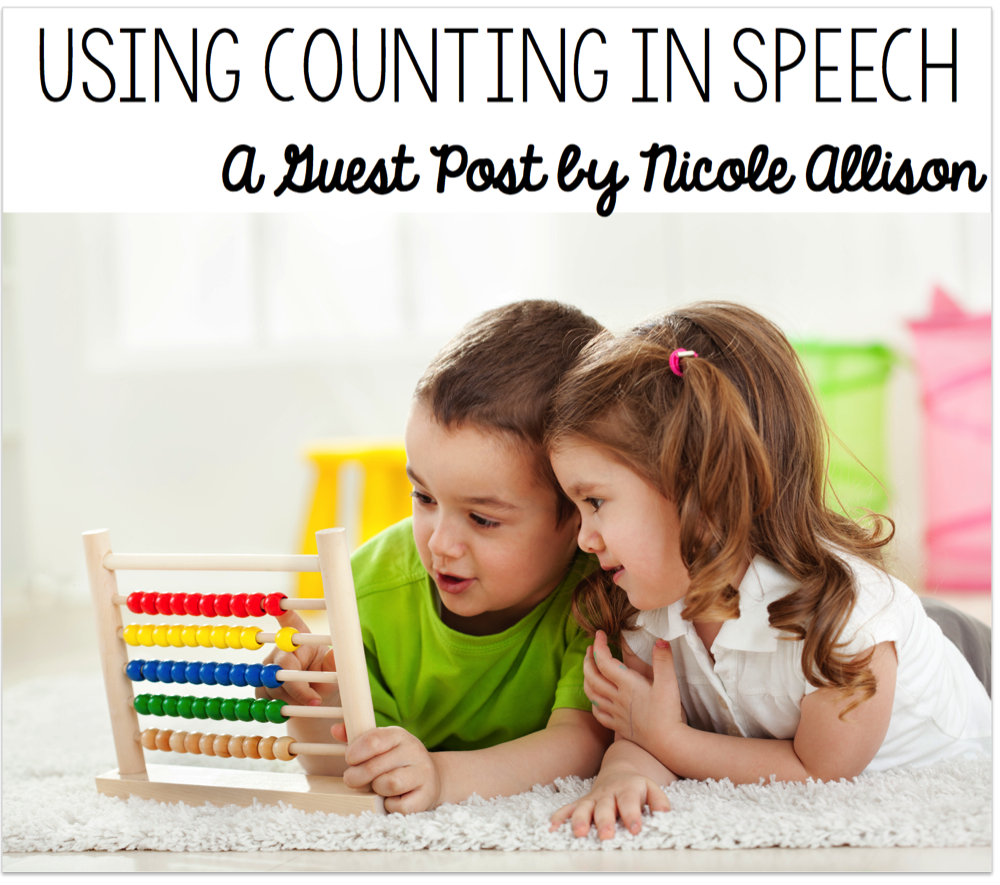Using Counting In Speech {Guest Post}
Hi there! It’s Nicole Allison from Allison Speech Peeps talking here. I’m so honored to be guest-writing for you today! Thanks Teach Speech 365!
Today I’m writing about a quick tip I’ve found useful for articulation, especially in those hallway times or those few seconds of down time my students have when I’m pulling out another activity. We all know how essential it is to have a few of those short and sweet activities up our sleeves, right? Well, this one’s pretty simple.
It’s counting.
You might be thinking “But my students with sound errors come to me to work on articulation, not math skills. They already know how to count.”
And that’s true.
And that’s why it’s good practice.
Here’s why I’ll have my students with articulation goals do some quick counting for me:
- It’s automatic. Counting is about as automatic and ingrained in a person’s speech as they come. You actually don’t even need to think when you are counting, if you know your numbers. It just happens. Sort of like how driving home happens, even when you don’t remember how you got home (which is a little scary!). Because of this, I like using counting as a quick assessment. I’ll even tell my students “I want you to count to ten. Now be careful…because I’m really listening for your /th/ sound…” If they can catch themselves and say “three” correctly while performing this automatic activity, I know they’re almost ready to be dismissed.
- Numbers actually contain a majority of the sounds my students have goals on. Just in the numbers 1-10, students must be able to say /t/, /f/, /v/, /s/, /th/ and /r/. There’s even more once you count higher such as /l/ in eleven. And for that little one working on /th/, one of my favorites is challenging him to say “3,333” correctly. If he can say that, it’s safe to say he’s made a ton of progress!
- It’s quick. It takes a student an average of less than 10 seconds to count to ten. Perfect when I don’t have a ton of time to whip out more articulation cards.
- It makes errors more noticeable. It’s easy for me to listen to someone counting while multitasking AND notice when the say an incorrect sound. It sticks out like a sore thumb. Because of this, it’s also a great activity to record and provide audio-feedback on. Once they listen to their recording, I’ll ask “How do you think you sounded?” They usually don’t miss a beat.
- Counting is an easy skill to practice while in the classroom. For younger grades, counting is usually one of those skills that is assessed on a regular basis…as in every few weeks. This means there are lots of opportunities for practice and something the teacher can monitor as well.
The next time you’re walking one of your little students down the hallway, tell them you’re going to listen for their sounds while they count. Have them count the tile squares they walk on or the artwork displayed in the hallway. And maybe, just maybe, if they can say all their sounds correctly while doing this automatic activity, they may not need you much longer..
Thanks again Teach Speech 365 for allowing me to write!
Instagram: nrallison


